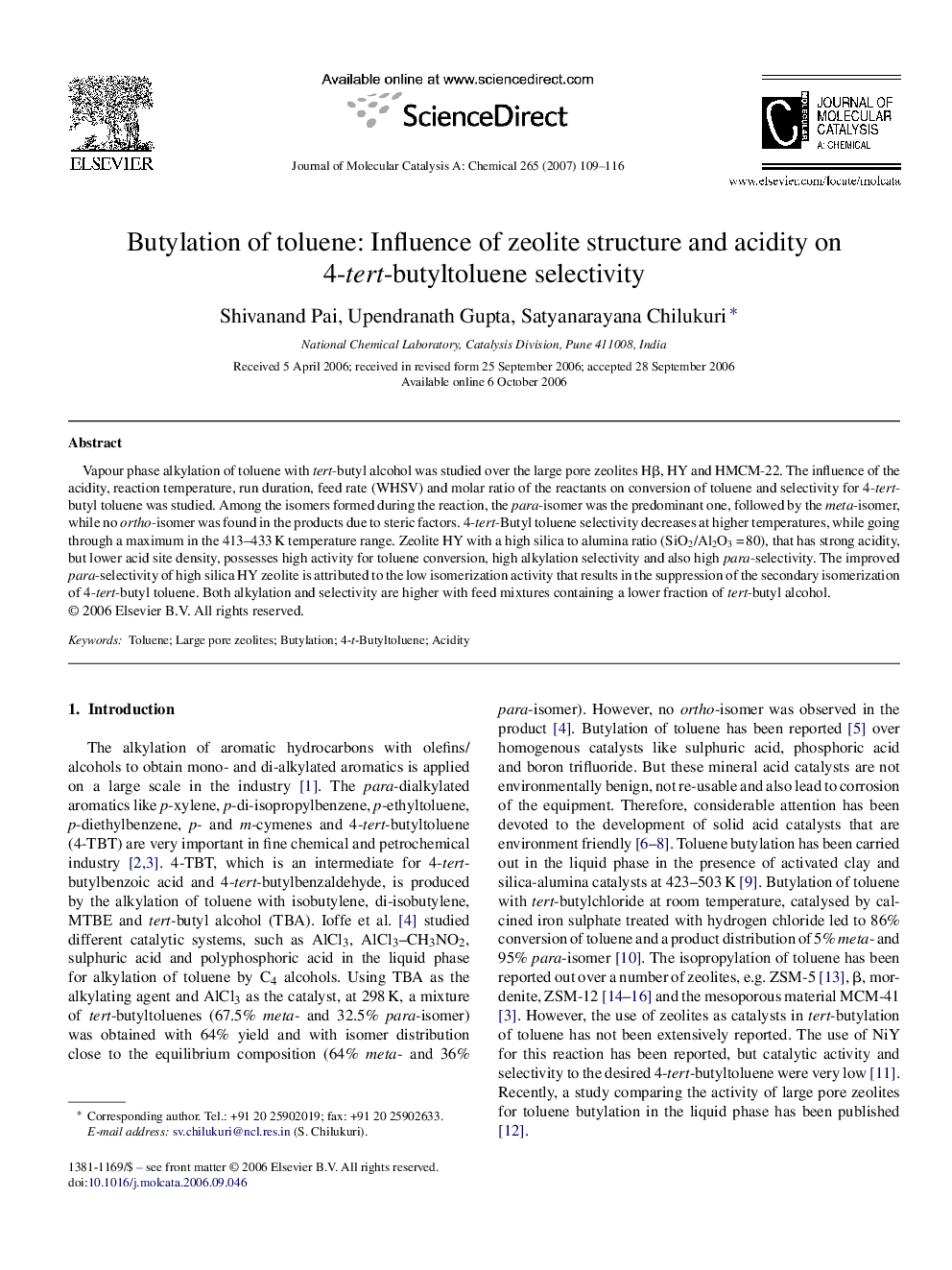| Article ID | Journal | Published Year | Pages | File Type |
|---|---|---|---|---|
| 68095 | Journal of Molecular Catalysis A: Chemical | 2007 | 8 Pages |
Vapour phase alkylation of toluene with tert-butyl alcohol was studied over the large pore zeolites Hβ, HY and HMCM-22. The influence of the acidity, reaction temperature, run duration, feed rate (WHSV) and molar ratio of the reactants on conversion of toluene and selectivity for 4-tert-butyl toluene was studied. Among the isomers formed during the reaction, the para-isomer was the predominant one, followed by the meta-isomer, while no ortho-isomer was found in the products due to steric factors. 4-tert-Butyl toluene selectivity decreases at higher temperatures, while going through a maximum in the 413–433 K temperature range. Zeolite HY with a high silica to alumina ratio (SiO2/Al2O3 = 80), that has strong acidity, but lower acid site density, possesses high activity for toluene conversion, high alkylation selectivity and also high para-selectivity. The improved para-selectivity of high silica HY zeolite is attributed to the low isomerization activity that results in the suppression of the secondary isomerization of 4-tert-butyl toluene. Both alkylation and selectivity are higher with feed mixtures containing a lower fraction of tert-butyl alcohol.
Graphical abstractVapour phase alkylation of toluene with tert-butylalcohol was studied over large pore zeolite catalysts Hβ, HY and HMCM-22. Zeolite HY with high silica to alumina ratio, that has strong acidity, but lower acid site density, offers good conversion, high alkylation selectivity and also much better para-selectivity. The improved para-selectivity of high silica HY zeolite catalyst is attributed to the low isomerization activity, that results in the suppression of the secondary isomerization of 4-TBT. Figure optionsDownload full-size imageDownload as PowerPoint slide
